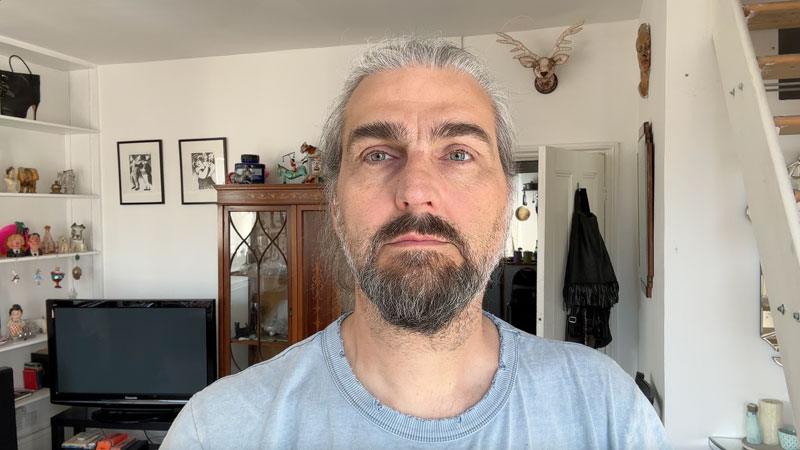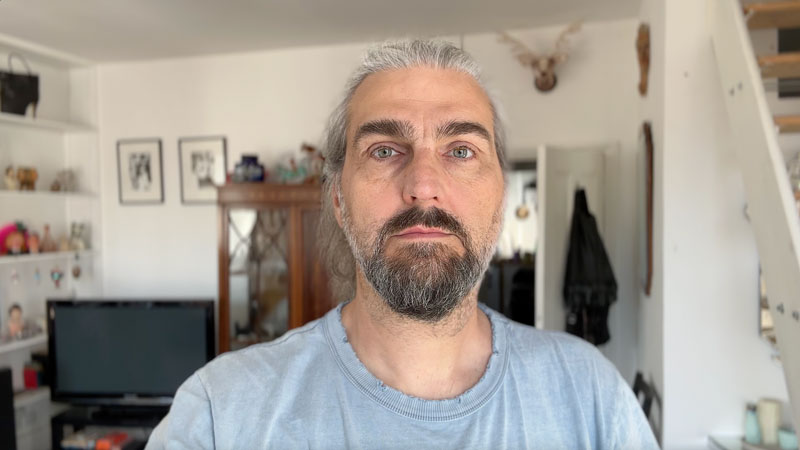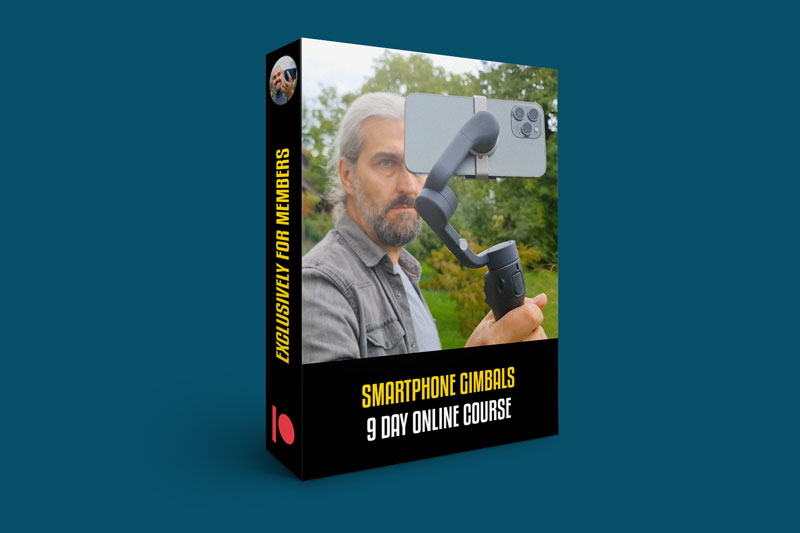9 Day Smartphone Gimbal Course Begins! + “Cinematic mode” on any video
In today’s exciting, content-filled members-only post:
- Day 1 of my new 9 Day Smartphone Gimbal Online Course
- How to get “cinematic mode” on any video
- New video tutorials
- All the members-only content organised
Online Smartphone Gimbal Course Day 1
Smartphone gimbals aren’t just for stabilising your smartphone camera. They allow you to create shots you would find more difficult (or impossible) to achieve without some kind of extra accessory. In day 1 of the course I explain why and go over the basics of what a gimbal is and how they work.
“Cinematic mode” on any video
You’ve probably either heard about (or used) the cinematic mode which is a feature of recent iPhones (13 and 14). If you haven’t, cinematic mode allows you to create the effect of a shallow depth of field.
In photography terms, a shallow depth of field means the focus depth is shallow. This causes the foreground and background to be out of focus and helps to isolate the subject.
A shallow depth of field is one feature of photography and cinematography that has been almost impossible to achieve using smartphones, due to their tiny lenses and tiny sensors.


The top image is from my iPhone 14 Pro selfie camera in normal mode, while the bottom image is in Cinematic mode.
Shallow Depth of Field
Having a shallow depth of field has a few advantages.
Firstly and most obviously it’s an easy way to make an image look more “cinematic”. This is why people go to great lengths to achieve a shallow depth of field, even adding large depth of field adapters to their phones.
Secondly, as I said it helps to isolate the subject within the frame and reduce distracting background details.
Thirdly, a shallow depth of field can be used to hide the identity of people in the background. This is one of the big advantages for modern film and TV productions as it solves the problem of random people getting into a shot and then having to get their permission.
Films with a big enough budget will simply pay to close off streets or whole areas of a city and then replace the passersby with actors. This is obviously pretty expensive.
By using a very shallow depth of field, filmmakers can therefore save hundreds of thousands of dollars.
Now, if you don’t have an iPhone 13 or 14 there is a solution
One of our members shared this knowledge on the Discord server and I was very impressed, so I thought I would share it with everyone here.
This can now be done in DaVinci Resolve. You can even program in a focus pull, just like with iPhone’s cinematic mode. Unfortunately, you do need the paid version to remove the watermark.
Find out how:
For my scifi series Kosmos (2015), I actually spend weeks masking the actors by hand, frame by frame, so that I could apply a shallow depth of field effect. I also did this for the final episode of Silent Eye (Sleephouse). So, while the DaVince Resolve method is more complicated it’s a great improvement.
Find out what is available for members now HERE.
Happy filming!
Simon
Simon Horrocks
Simon Horrocks is a screenwriter & filmmaker. His debut feature THIRD CONTACT was shot on a consumer camcorder and premiered at the BFI IMAX in 2013. His shot-on-smartphones sci-fi series SILENT EYE featured on Amazon Prime. He now runs a popular Patreon page which offers online courses for beginners, customised tips and more: www.patreon.com/SilentEye



Sir I am highly interested in making film , documentary specially
I have no iPhone, but smart phone i have,
Editing software I have some knowledge of filmora
I how ever need your help.
Can you please guide me?